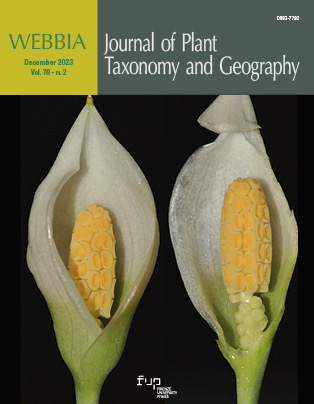Published 2023-10-10
Keywords
- Bauhinia,
- Piliostigma,
- ITS,
- rbcL,
- trnL-F
- molecular phylogeny,
- plant anatomy ...More
How to Cite
Copyright (c) 2023 Aramide Dolapo Igbari, Williams Ozoemena Madu, Oluwatoyin Temitayo Ogundipe

This work is licensed under a Creative Commons Attribution 4.0 International License.
Abstract
The tribe Bauhinieae is the largest and most taxonomically complex group within the subfamily Cercidoideae. They possess the most distinguishable morphological features but are the most variable group. Here, we explore the phylogenetic relationship of the tribe Bauhinieae using morphological, anatomical and molecular data (ITS, rbcL, trnL-F, ITS+rbcL+trnL-F). Relationships inferred from morphological, anatomical and molecular data revealed congruent result, a non-monophyletic Bauhinia and Piliostigma group. The leaf epidermal shape in all Bauhinia species examined are polygonal with straight cell walls except B. tomentosa, which has an undulating cell wall. Stomatal types observed vary between the two genera studied. Bauhinia species has paracytic stomata while Piliostigma species exhibited hemiparacytic stomata. Dendrogram generated revealed the interrelationship between the species at a distance value of 80. Bayesian analysis revealed a high resolution of species and posterior probability. The strict consensus tree for all the tested gene regions revealed a polyphyletic Bauhina divided into three major clades. The Piliostigma group exhibited a paraphyletic and polyphyletic relationship within the Bauhinia group at high support values. B tomentosa exhibited a closer relationship with Piliostigma species. These results support the proposition to divide members of the large Bauhinia s.s group into subclades. This study has attempted to elucidate the unresolved species and genus level taxonomy of the tribe Bauhinieae. However, more variable gene regions in addition to broader species sampling should be considered for further phylogenetic patterns of this taxon.


